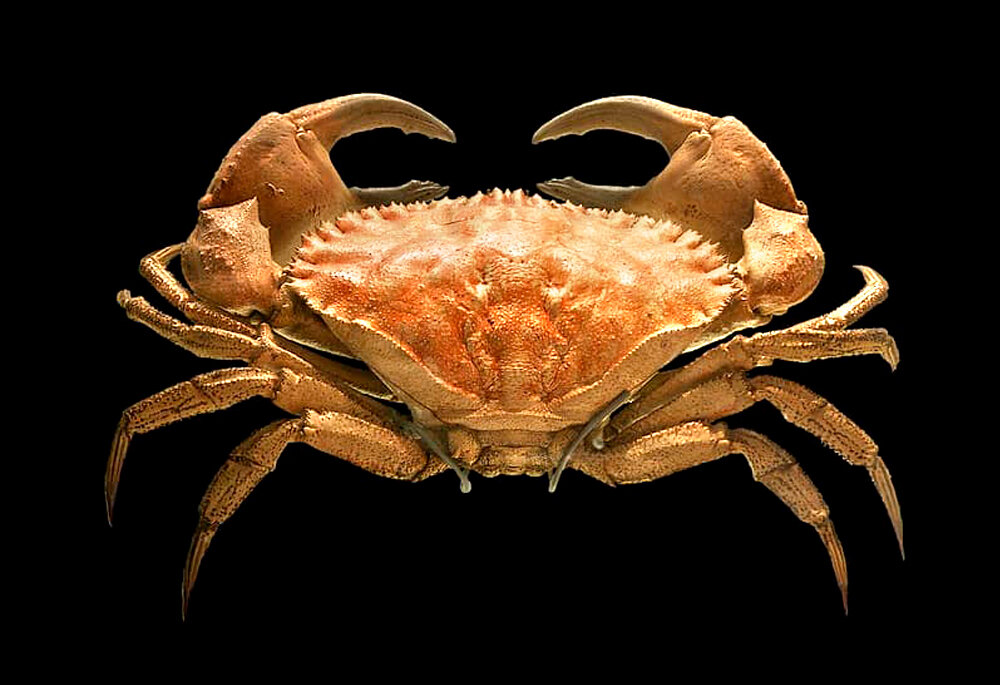Crabs Come Out Of Their Shells In The Research World
By Grace Bukowski-Thall
Image from Pikrepo
Scientists have made many breakthroughs in technology and medicine by repurposing biological mechanisms that organisms have been using for millennia. For instance, fermentation, a metabolic process in bacteria, is also used to make foods like bread and wine. In this process, a gene from the fungus Bacillus thuringiensis is transferred to crops to make them resistant to pests, and most scientific discoveries would not even be possible without animal model organisms. One creature in particular that is used in many scientific fields is the crab.
Crab Neuroscientists
Although crabs lack brains, they are often used for neuroscience research. Many scientists use crabs and other decapod crustaceans such as lobsters and crawfish to study the neural networks that control behaviors such as breathing, walking, flying, and chewing in both vertebrates and invertebrates. Decapod crustaceans make particularly good model organisms for neurophysiological research because they have relatively small and simple central nervous systems. In fact, enough researchers study crab nervous systems that there are typically annual conventions for crustacean neuroscientists. These scientists typically study the cardiac ganglion, which controls the contractual movements of the heart or “heartbeat,” and the stomatogastric nervous system, which allows crabs to process and chew their food. Using marine invertebrates like crabs to study neural networks gives us a better understanding of neurological functions and concepts that could potentially translate to human medicine.
Horseshoe Crab Blood
Horseshoe crabs (Limulus polyphemus) are not in fact true crabs, but rather a 450-million-year-old species of aquatic arthropod more closely related to scorpions and spiders than to crabs. Because horseshoe crabs have remained unchanged for about 200 million years, they are often referred to as “living fossils.”
Image by Pixels
In late spring, thousands of horseshoe crabs crawl onto beaches across the Atlantic coast to spawn. If you were to find yourself on one of these beaches, you would likely see hordes of pharmaceutical company employees collecting horseshoe crabs. But what interest could big pharmaceutical companies have in these small marine organisms? It turns out that a horseshoe crab’s blood possesses a unique quality that has made it very commercially desirable.
Unlike our blood, horseshoe crab blood is bright blue because it uses a molecule called hemocyanin to transport oxygen rather than hemoglobin. But what is even more fascinating about horseshoe crab blood is that it contains amebocytes, which are a type of cell that protects the blood from bacterial infection. When bacteria endotoxins are detected in horseshoe crab blood, amebocytes release a jelly-like substance called coagulin, which traps the bacteria invaders until other molecular defense mechanisms can arrive on the scene. Scientists think these amebocytes, which are only found in horseshoe crab blood, is what has allowed the horseshoe crab species to survive for so long.
Image by Angel Schatz
Horseshoe crab amebocytes are used by pharmaceutical industries to test drugs for bacterial endotoxins. Imagine a vaccine or another type of sterile injectable drug was accidentally contaminated with bacteria; if the drug also contained horseshoe crab amebocytes you would see a visible clotting and know that the drug was tainted.
Since these amebocytes are a vital part of making medications safe for humans, horseshoe crab blood is an extremely valuable resource, especially at a time when multiple different pharmaceutical companies and laboratories are trying to develop a COVID-19 vaccine. Pharmaceutical companies collect about a half millionhorseshoe crabs annually. After extracting some of their blood, the horseshoe crabs are then returned to the ocean. However, many of these crabs end up dying due to the invasive bleeding procedure. Since companies started using horseshoe crab amebocytes, horseshoe crab populations have been in decline. This is worrying because in addition to being necessary for testing the safety of vaccines and drugs, the horseshoe crab is also a keystone species essential to the diets of many types of fish and birds. This shows how the exploitation of natural resources can have a severe ecological impact.
Green Crabs: Food of Foe?
Where horseshoe crabs are a highly coveted natural resource, green crabs are an invasive species with little commercial value. The European green crab (Carcinus maenas) was accidentally introduced to the Northeastern United States in the early 1800s, and is now the most abundant crab species in the area.
Green crabs have both a negative ecological and economic impact. Green crabs are very adept predators of bivalves like soft shell clams, competing with both native predators and fishing industries. Additionally, while burrowing and searching for prey, green crabs uproot eelgrass. This is particularly harmful to the environmentbecause eelgrass is an important food source for birds, a habitat for fish, and it also helps maintain water quality.
Image by CSIRO Marine Research
Although perfectly edible, green crabs are not typically collected for food because of their small size. There has been a recent movement consisting of an unlikely pairing between scientists and chefs to put green crabs on the market in order to reduce their population sizes. The University of Maine has developed a mechanical processor that can turn green crab meat into a puree that imitates a traditional Japanese seafood paste called surimi. Americans are not typically used to enjoying crab in this way, but perhaps with time green crab patties will turn into a delicacy in the Northeast.
Image from Open Food Facts





